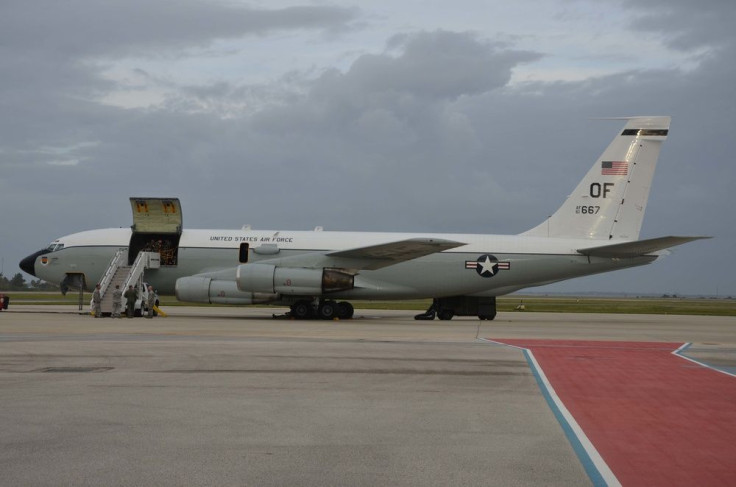US Sent 'Nuke Sniffer' Plane To South China Sea A Month After Submarine Collision, Satellite Data Shows
KEY POINTS
- Five spy planes, including the Constant Phoenix, flew over the area
- This happened a month after USS Connecticut suffered a collision
- Deploying the nuke sniffer in the disputed waters is a rare move
The U.S. sent a special 'nuke-sniffer' plane to the South China Sea over the weekend to examine radioactive material in the region, according to satellite images sourced by a Beijing-based think tank.
Experts said the U.S. could possibly be checking for nuclear leaks after last month's USS Connecticut collision. But, there is also a chance that the plane was scanning for possible signs of "underwater nuclear tests conducted by China," reported South China Morning Post.
Five reconnaissance planes, including the special-purpose aircraft Constant Phoenix (WC-135 ), flew over the area, suggested the data available with South China Sea Strategic Situation Probing Initiative.
This comes a month after U.S. Navy nuclear-powered submarine USS Connecticut collided with an unknown object while submerged in the region. Though the Navy said in a statement that the submarine's nuclear propulsion plant and spaces had not been affected, China had expressed concerns about "nuclear leaks."
Satellite images show that the 'nuke sniffer' was accompanied by an E-8C Joint Surveillance Target Attack Radar System aircraft, two P-8A maritime patrol planes, and one EP-3E electronic warfare and reconnaissance aircraft.
Five US reconnaissance aircraft operate over the #SouthChinaSea, Oct 31:
— SCS Probing Initiative (@SCS_PI) October 31, 2021
USAF WC-135W #AE0941, E-8C #AE1497
USN 2*P-8As #AE685B #AE6857, EP-3E #AE1D95.
Among which WC-135W "Nuke Sniffer" is a rare guest to the region, whose last operation could be traced back to January 2020. pic.twitter.com/61ewpvZT1p
According to South China Sea Strategic Situation Probing Initiative, it is "rare for the WC-135 to come to the South China Sea region and its last activity in the region dates back to January 2020."
The Air Force only has one Boeing WC-135 Constant Phoenix, which collects atmospheric samples to detect and identify radioactive debris from nuclear explosions. It can also be employed after nuclear weapon tests and atomic accidents to help glean more information about those events and track the potential spread of dangerous radioactive material.
Two months ago, the 'nuke sniffer' was seen flying over the Baltic Sea, a week after the Russian Navy's Oscar-II class nuclear guided-missile submarine Orel broke down while transiting out of the Baltic Sea.
According to Ridzwan Rahmat, the principal defense analyst at military publication Janes, the Constant Phoenix’s deployment may have been an attempt to examine the atmosphere for any radioactive material.
“It could be a precautionary measure by the U.S. to understand if there had been any leakage of radioactive materials from the collision,” Rahmat told South China Morning Post.
Hong Kong-based military commentator Song Zhongping also believes the mission could have been to check for nuclear leaks.
“And, if this was the real purpose, that indicates the collision was severe to a degree that the U.S. is worried and dispatched a plane to gather more information," Song told the news outlet.
He added that there was another possible explanation. "Maybe the U.S. is worried that China has conducted some underwater nuclear tests, and Washington flew a plane here to confirm," he told South China Morning Post.
Recent satellite images had proved that USS Connecticut suffered a hit well below the vessel's surfaced waterline, such as on the bottom of its hull.

© Copyright IBTimes 2024. All rights reserved.





















